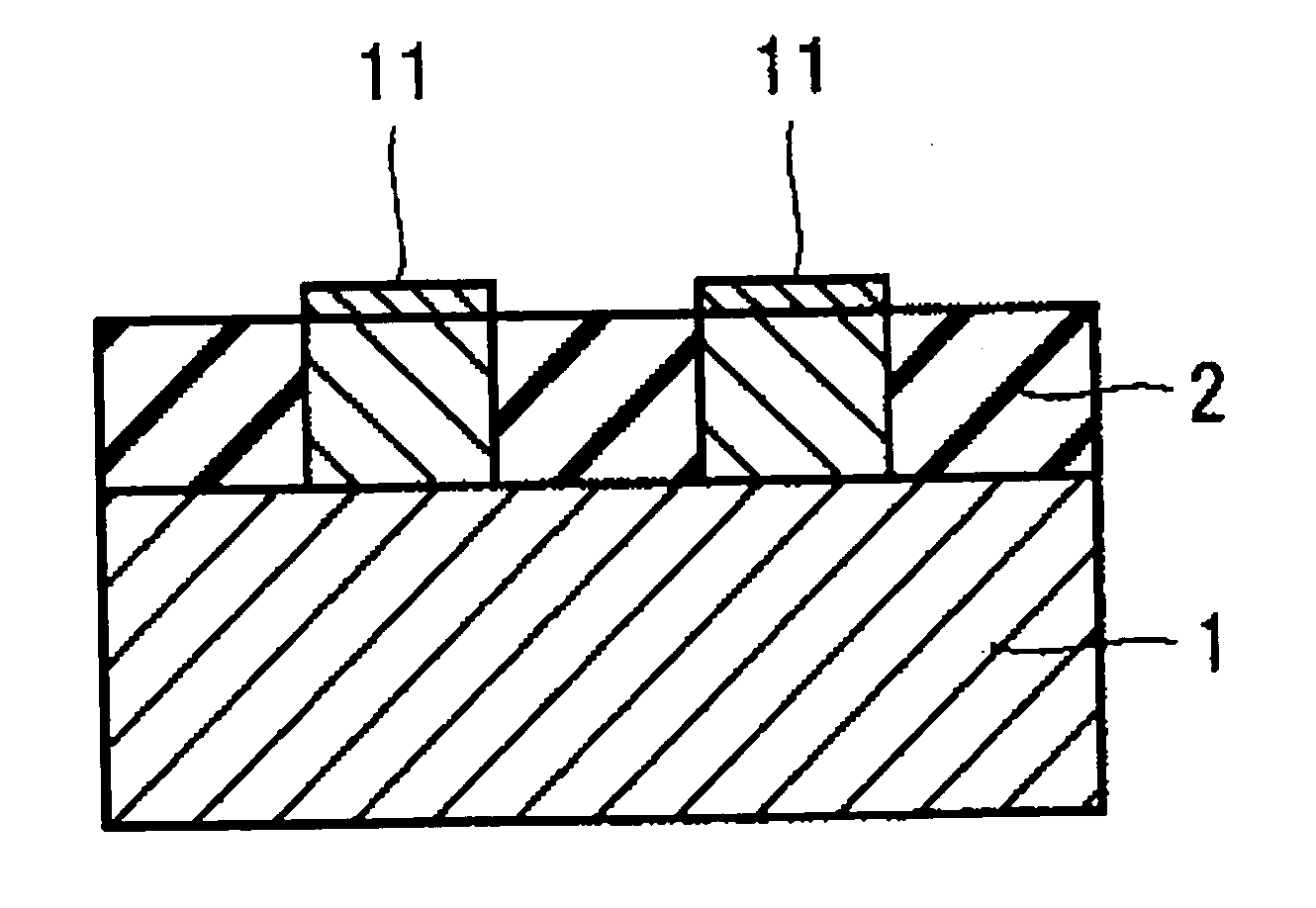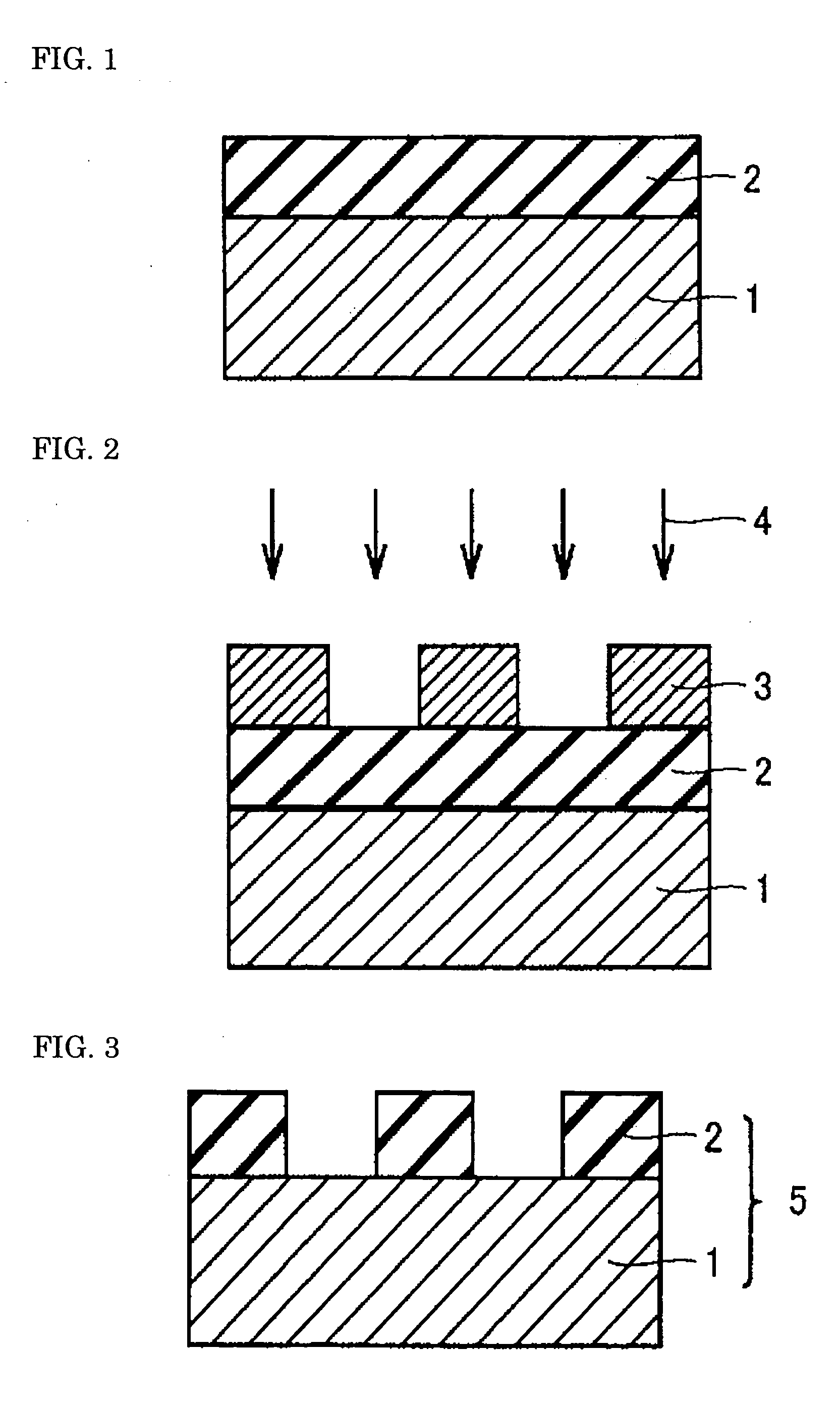Method of manufacturing electrical parts
a manufacturing method and technology of electrical parts, applied in the field of manufacturing electrical parts, can solve the problems of high contact resistance of the surface thereof, and achieve the effect of reducing the contact resistance on the surface of the electrical parts and good plating
- Summary
- Abstract
- Description
- Claims
- Application Information
AI Technical Summary
Benefits of technology
Problems solved by technology
Method used
Image
Examples
embodiment 1
[0030] A preferable example of the manufacturing method of electrical parts according to the present invention will be described in reference to the drawings. First, as schematically shown in the sectional view of FIG. 1, a photoresist 2 is applied to the whole surface of a conductive substrate 1. In this case, the substrate 1 may be an electroconductive substrate made of stainless steel, copper or aluminum, etc. or may be a substrate in which a conductive layer is formed by sputtering titanium, aluminum, copper, or alloy of these metals on a non-electroconductive substrate made of silicon or glass, etc. As for the photoresist, a resin such as polymethyl methacrylate (PMMA), which includes carbon and hydrogen, is used, for example.
[0031] Subsequently, as shown in the schematic sectional view of FIG. 2, after a mask 3 in which openings are formed in a desired pattern is placed on the surface of the photoresist 2, X-rays 4 are irradiated from a position above the mask 3. Then, as sho...
embodiment 2
[0038] In reference to the drawings, another preferable example of the manufacturing method of electrical parts according to the present invention will be described hereinafter. First, as shown in the schematic sectional view of FIG. 10, the steps of manufacture until the step of removing the metal oxide film formed on the surface of the metal layer 6 are the same as in the above-described embodiment 1. Next, as shown in the schematic sectional view of FIG. 11, oxidation prevention members 11 are provided on the surfaces of the metal layers 6. The oxidation prevention member 11 is not particularly limited if it can prevent the oxidation of the surface of the metal layer 6: it may be formed by electroplating with a metal such as copper, for example.
[0039] As shown in the schematic sectional view of FIG. 12, the photoresist 2 on the substrate 1 is removed by performing ashing by means of plasma using a gas which includes oxygen and fluorine compound such as carbon tetrafluoride or xe...
example 1
[0041] A photoresist consisting of PMMA was applied onto the whole surface of a substrate made of stainless steel, and after irradiating synchrotron radiation (SR), which is X-ray, to a part of the photoresist, the irradiated part of the photoresist was removed to expose the surface of the substrate so that the photoresist having openings with the removed parts of 60 μm width, 1 mm length and 60 μm depth was formed.
[0042] The master die thus prepared was used as a cathode and a nickel board was used as an anode such that these electrodes were put in an electrolysis solution of pH 4.0 having the following composition and contained in an electroplating bath. Thus, electroforming was performed while the electrolysis solution was maintained at a temperature of 60° C. and an electric current with an electric current density of 4A / dm2 was caused to flow between these electrodes. The notation of the compositions of the electrolysis solution described below represents the mass or volume of...
PUM
| Property | Measurement | Unit |
|---|---|---|
| depth | aaaaa | aaaaa |
| width | aaaaa | aaaaa |
| width | aaaaa | aaaaa |
Abstract
Description
Claims
Application Information
 Login to View More
Login to View More - R&D
- Intellectual Property
- Life Sciences
- Materials
- Tech Scout
- Unparalleled Data Quality
- Higher Quality Content
- 60% Fewer Hallucinations
Browse by: Latest US Patents, China's latest patents, Technical Efficacy Thesaurus, Application Domain, Technology Topic, Popular Technical Reports.
© 2025 PatSnap. All rights reserved.Legal|Privacy policy|Modern Slavery Act Transparency Statement|Sitemap|About US| Contact US: help@patsnap.com



